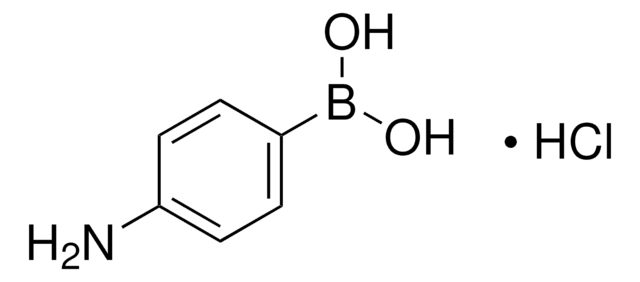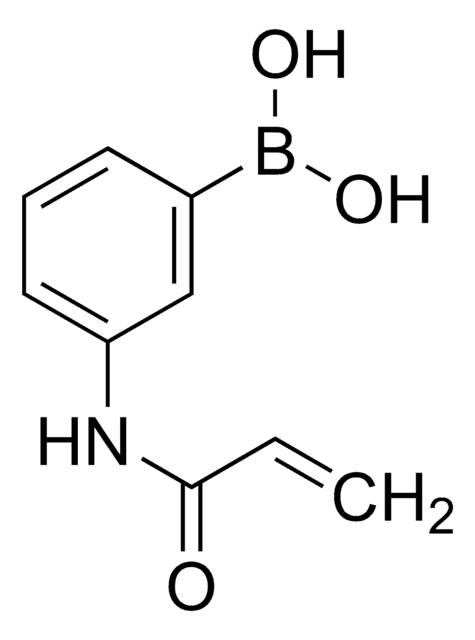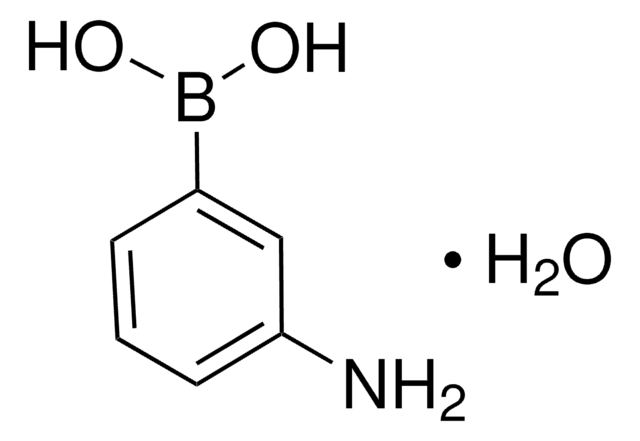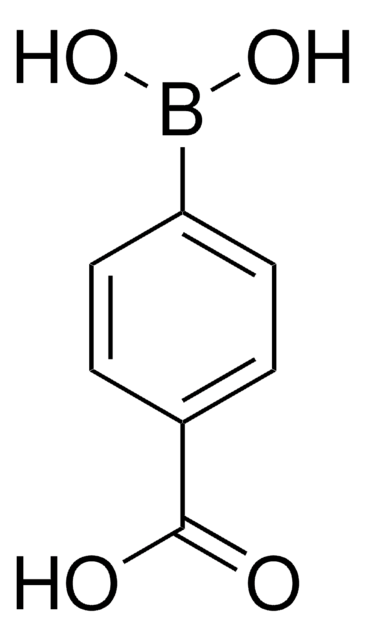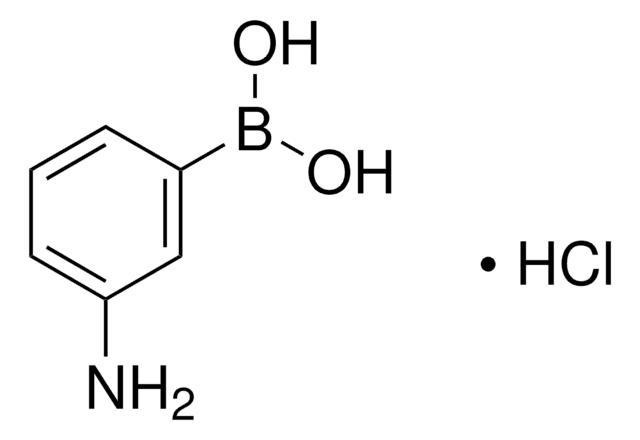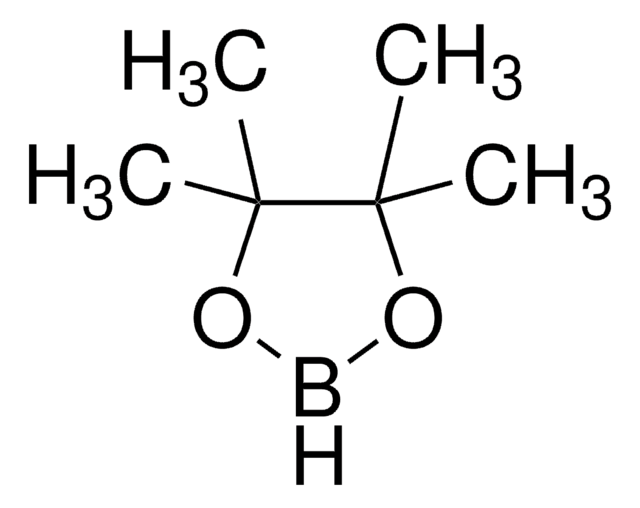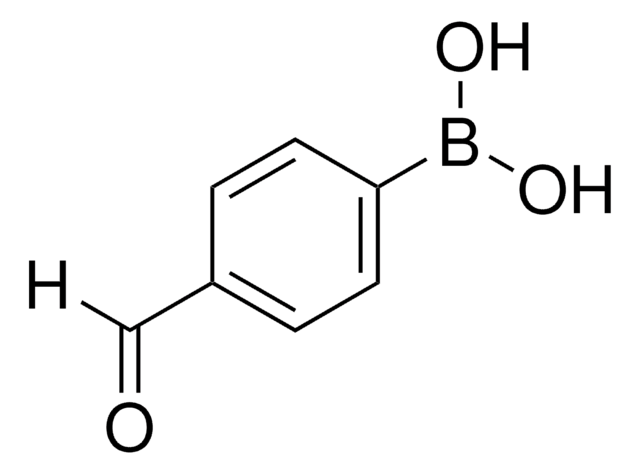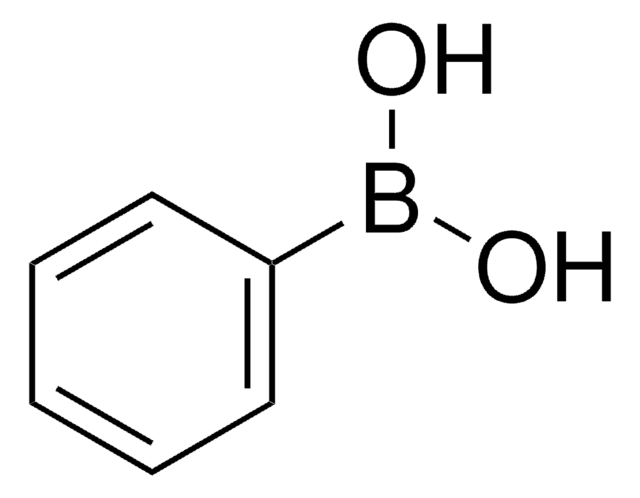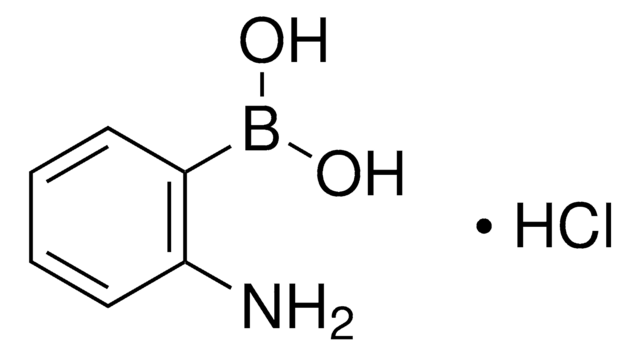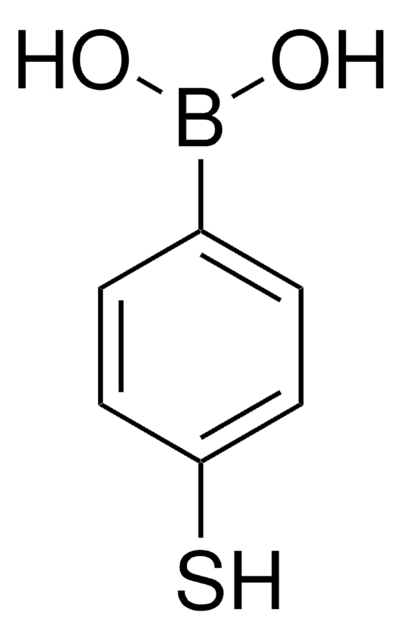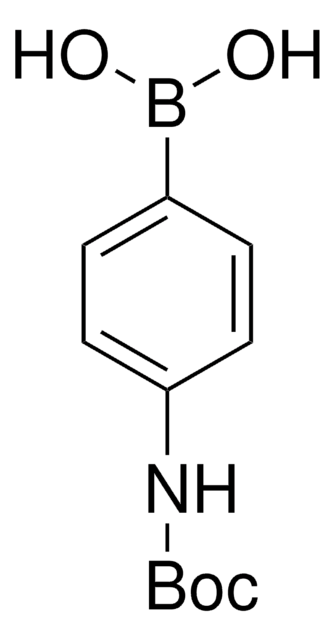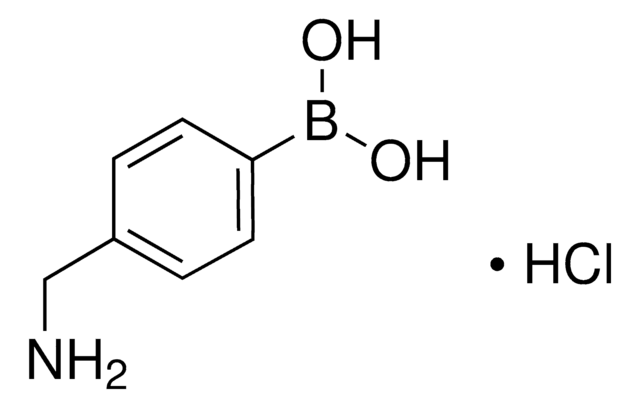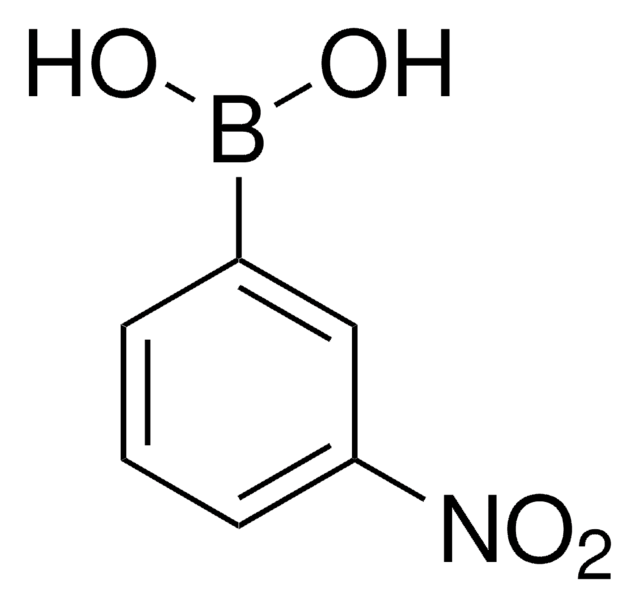900988
3-Aminophenylboronic acid
Synonym(s):
3-Aminobenzeneboronic acid
Sign Into View Organizational & Contract Pricing
All Photos(3)
About This Item
Empirical Formula (Hill Notation):
C6H8BNO2
CAS Number:
Molecular Weight:
136.94
EC Number:
MDL number:
UNSPSC Code:
12352106
NACRES:
NA.22
Recommended Products
form
powder or crystals
Quality Level
mp
225 °C
SMILES string
Nc1cccc(c1)B(O)O
InChI
1S/C6H8BNO2/c8-6-3-1-2-5(4-6)7(9)10/h1-4,9-10H,8H2
InChI key
JMZFEHDNIAQMNB-UHFFFAOYSA-N
Looking for similar products? Visit Product Comparison Guide
Related Categories
Application
3-Aminophenylboronic acid (3-APBA) can undergo three-component condensation with 3,5-disubstituted salicylaldehyde derivatives and aliphatic alcohols to afford calix-shaped boron complexes. Due to its ability to selectively bind with diol-compounds, 3-APBA can be employed in developing sensors for detecting saccharides and glycosylated biomolecules by immobilizing on a metal substrate via a self-assembled monolayer. This product was previously listed as CDS003827.
Storage Class Code
11 - Combustible Solids
WGK
WGK 3
Flash Point(F)
Not applicable
Flash Point(C)
Not applicable
Choose from one of the most recent versions:
Already Own This Product?
Find documentation for the products that you have recently purchased in the Document Library.
Customers Also Viewed
3-Aminophenylboronic acid as building block for the construction of calix- and cage-shaped boron complexes.
Barba V, et al.
Journal of Organometallic Chemistry, 694, 2127-2133 (2009)
Rodtichoti Wannapob et al.
Biosensors & bioelectronics, 26(2), 357-364 (2010-08-31)
Boronic acid that can reversibly bind to diols was used to detect bacteria through its affinity binding reaction with diol-groups on bacterial cell walls. 3-aminophenylboronic acid (3-APBA) was immobilized on a gold electrode via a self-assembled monolayer. The change in
Our team of scientists has experience in all areas of research including Life Science, Material Science, Chemical Synthesis, Chromatography, Analytical and many others.
Contact Technical Service